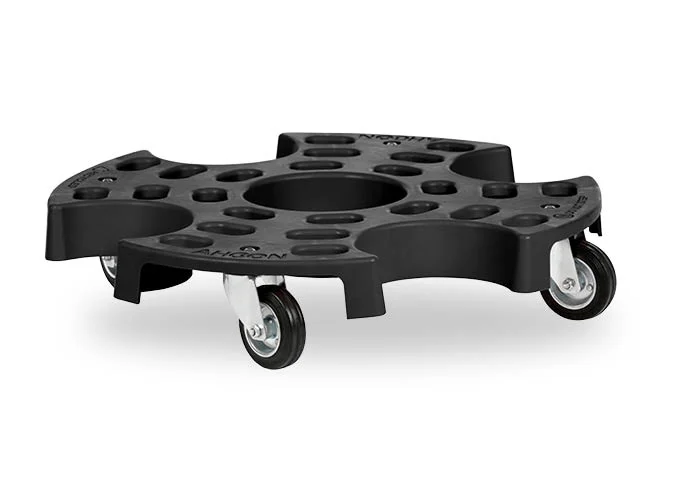Caster Wheels: The Unsung Heroes of Mobility

Caster wheels, often overlooked as simple components, are the backbone of countless applications, from industrial equipment to household furniture. These small but mighty wheels facilitate smooth movement, enabling efficient transportation and maneuverability. This article delves into the world of caster wheels, exploring their types, construction, applications, and the factors to consider when selecting the right caster for your specific needs.
Understanding Caster Wheels
A caster wheel is a type of wheel equipped with a swiveling mechanism, allowing it to rotate freely in any direction. This feature distinguishes it from fixed wheels and contributes to its versatility. The basic components of a caster wheel include:
- Wheel: The circular part that comes into contact with the ground.
- Hub: The central part that connects the wheel to the swivel mechanism.
- Swivel Caster: The component that allows the wheel to rotate.
- Mounting Plate: The base that attaches the caster to the equipment.
Types of Caster Wheels
Caster wheels come in various types, each designed for specific applications and load capacities.
Based on Wheel Material:
- Rubber: Offers excellent traction, shock absorption, and noise reduction. Ideal for indoor use on smooth surfaces.
- Polyurethane (PU): Combines the durability of rubber with the resilience of plastic. Suitable for both indoor and outdoor use.
- Nylon: Lightweight and resistant to chemicals and oils. Commonly used in industrial settings.
- Metal: Provides exceptional strength and durability for heavy-duty applications.
Based on Wheel Type:
- Rigid Caster: The wheel is fixed in a straight position, offering stability but limited maneuverability.
- Swivel Caster: The wheel can rotate 360 degrees, providing excellent maneuverability.
- Locking Caster: A swivel caster with a locking mechanism to prevent movement.
- Stem Caster: Mounted on a stem that fits into a hole in the equipment, providing a low profile.
- Plate Caster: Mounted on a plate that attaches to the equipment using screws or bolts.
Construction and Features
Caster wheels are constructed using a variety of materials and designs to meet different requirements. Key factors to consider include:
- Load Capacity: The maximum weight a caster can support without damage.
- Swivel Capacity: The ability of the caster to rotate freely.
- Wheel Diameter: Determines the height of the equipment and ground clearance.
- Hardness: The resistance of the wheel to deformation under load.
- Bearing Type: The type of bearing used in the swivel mechanism affects durability and smoothness.
Applications of Caster Wheels
Caster wheels find applications in a wide range of industries and settings:
- Industrial: Manufacturing, warehousing, logistics, and material handling equipment.
- Commercial: Retail stores, hospitals, restaurants, and supermarkets.
- Residential: Furniture, appliances, and home office equipment.
- Medical: Hospital beds, patient carts, and medical equipment.
- Automotive: Automotive repair shops and car washes.
Selecting the Right Caster Wheel
Choosing the appropriate caster wheel is crucial for optimal performance and equipment longevity. Key factors to consider include:
- Load Capacity: Determine the weight the caster will need to support.
- Floor Type: The type of floor surface will influence the wheel material and hardness.
- Maneuverability: Consider the required level of movement and turning radius.
- Environment: Factors like temperature, humidity, and chemical exposure may affect the wheel material.
- Mounting Options: Choose the mounting style compatible with your equipment.
- Cost: Balance the desired features with budget constraints.
Maintenance and Care
Proper maintenance ensures the longevity and performance of caster wheels:
- Regular Inspection: Check for signs of wear, damage, or debris.
- Lubrication: Apply lubricant to the swivel mechanism as recommended by the manufacturer.
- Cleaning: Remove dirt and debris to prevent damage and corrosion.
- Storage: Store casters in a clean, dry place to protect them from damage.
Conclusion
Caster wheels are essential components that contribute significantly to the efficiency and mobility of various applications. Understanding the different types, construction, and factors influencing caster selection is crucial for making informed decisions. By selecting the right caster and providing proper maintenance, you can optimize equipment performance and extend its lifespan.





